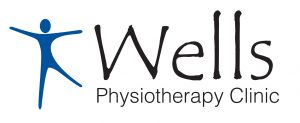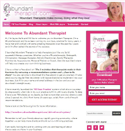The Orchard Clinic – Adapting Practice:
Infection Risk Assessment and Mitigation Guide
Wells Physiotherapy Clinic working in association with The Orchard Clinic
This document provides a written record of the heightened infection control measures that this clinic has put in place to ensure the safety of and all Staff and Patients during the COVID-19 pandemic.
The Risk Assessment and Mitigation Record will be undertaken in conjunction with regular reviews of Clinical Setting guidance from the following governing bodies:
Institute of Osteopathy (iO): in particular, the guidance ‘Infection control and PPE’ and ‘Adapting Practice guide’
General Osteopathic Council (GOsC): in particular, the ‘Interim Infection Control Guidance for COVID-19’ which requires compliance with Osteopathic Practice Standards including but not limited to:
A2 – ‘Adapting your communication to take account of (your Patient’s) particular needs’
C5 – ‘You must ensure your Practice is safe, clean and hygienic’
D11 – ‘You must ensure that any problems with your own health do not affect your Patient’
Public Health England (PHE)
Chartered Society of Physiotherapy (CSP)
Health and Care Professions Council (HCPC)
General Council Massage Therapists (GCMT)
Complementary Natural Healthcare Council (CNHC)
Table 1 Is an overview of the measures we have taken that will form our Clinical Setting Policy for operating during COVID-19. It is available to all Staff and Patients.
Table 2 These are the specific areas assessed for risk and mitigation action. This table records in detail the areas of potential risk we have identified and highlights the mitigating actions to be taken.
Table 3 Outlines our PPE Policy for Staff at The Orchard Clinic
Table 4 Details how we communicate important information to Staff and Patient
| Table 1 | |
| Risk Assessment | On 05.05.20 Kelley Waters started undertaking a general risk assessment. This is an ongoing process, which will take account of the changing Government and Governing Bodies’ Guidance. |
| Heightened cleaning regimes | · The practice will be cleaned each morning when the practitioner arrives and by a visiting cleaner twice a week. The visiting Cleaner will follow strict protocol, wear PPE and complete a COVID-19 symptom check form each visit.
· The clinic room including floor and all hard surfaces will be cleaned between each patient · Common areas/washrooms will be cleaned every 4hrs · Hard surfaces in common areas will be cleaned after every patient · Anti-viral disinfectant sprays and couch roll tissue paper will be used · Antiseptic laundry disinfectant will be added to any laundry washing cycles · Any material washing will be placed in laundry bags and stored in bagged and lidded bin prior to washing |
| Increased protection measures | · Reception as a facility has been removed and there will be no Receptionist in the Reception hall
· All linens, material furniture and surface objects have been removed · Payment will be made online · Bookings will be made online · All staff will be equipped with PPE · Individually labelled Staff plastic wipeable storage boxes to be used for storage of personal items whilst working · Staff’s temperature taken and COVID-19 symptom checklist completed and signed on arrival at the clinic · Each patient’s (and any Chaperone’s) temperature checked when arriving on the premises and before entering the clinic room. Patient to wear mask and will be offered gloves. · Each patient and chaperone has to give consent for tracing by completing a contact tracing form · Clear plastic wipeable box in each treatment room to store Patient’s personal items such as car keys · Patients are asked at the end of their appointment to let us know if they develop any COVID-like symptoms in the next 72 hours |
| Distancing measures | · Only two treatment rooms will run initially each using it’s own entrance and exit door
· Patients will be asked not to enter the practice in advance of their appointment time but instead to remain in their car · Clinical notes will be completed after the patient has left the room to minimise face to face time · Patients will not meet other people within two metres in the waiting area as they enter/exit · NO drop-in appointments will be available · Doors will be locked when treatments are in progress?? |
| Staff training | · Correct handwashing technique posters displayed
· Donning and Doffing PPE safely · Staff briefed and trained on updated clinic policies and infection measures · Staff ‘Reintroduction to Practice session’ to familiarise with new systems and discuss any queries · Individual Staff files containing all Protocols and Checklists for easy access |
| Providing remote/ telehealth consultations | · All patients will have telephone pre-screening call
· Follow-up/maintenance appointments available via telephone/video call if appropriate |
| Table 2 | Description of risk | Mitigating action | |||
| Pre-screening for risk before public/patients visit the clinic
|
Infection
Group at risk
Moderate risk patients
Face-to-face consultation risks |
· Patients will be triaged when booking appointments:
· For High Risk patients (shielding group) only remote appointments will be offered. People at high risk from coronavirus include people who: o have had an organ transplant o are having chemotherapy or antibody treatment for cancer, including immunotherapy o are having an intense course of radiotherapy (radical radiotherapy) for lung cancer o are having targeted cancer treatments that can affect the immune system (such as protein kinase inhibitors or PARP inhibitors) o have blood or bone marrow cancer (such as leukaemia, lymphoma or myeloma) o have had a bone marrow or stem cell transplant in the past 6 months, or are still taking immunosuppressant medicine o have been told by a doctor they you have a severe lung condition (such as cystic fibrosis, severe asthma or severe COPD) o have a condition that means they have a very high risk of getting infections (such as SCID or sickle cell) o are taking medicine that makes them much more likely to get infections (such as high doses of steroids or immunosuppressant medicine) o have a serious heart condition o are pregnant · For moderate risk patients (clinically vulnerable), an assessment of their situation will be conducted over the phone. Remote consultations will be favoured, and if face-to-face appointments are warranted we will explain that there is a risk of attending despite the measures in place. People at moderate risk from coronavirus include people who: o are 70 or older o are pregnant ( is this moderate or high?) o have a lung condition that’s not severe (such as asthma, COPD, emphysema or bronchitis) o have heart disease (such as heart failure) o have diabetes o have chronic kidney disease o have liver disease (such as hepatitis) o have a condition affecting the brain or nerves (such as Parkinson’s disease, motor neurone disease, multiple sclerosis or cerebral palsy) o have a condition that means they have a high risk of getting infections o are taking medicine that can affect the immune system (such as low doses of steroids) o are very obese (a BMI of 40 or above)
· If a virtual consultation does not meet the needs of the Patient, Patients (and chaperone if relevant) will be pre-screened before they arrive in the clinic: · Screening for high risk patients · Screening for COVID symptoms or exposure: o Screening for any symptoms of COVID 19 (e.g. high temperature, a new, persistent cough, loss of taste or smell, new persistent headache) in the last 7 days o Screen to see if a member of their household had/has symptoms of COVID-19 or are in a high-risk category o Have they been in contact with someone with suspected/confirmed COVID-19 in last 14 days?
· Patients will also be informed that PPE will be used by the practitioner and they will be asked to wear a mask – their own or one provided by the clinic. If their own mask is unsuitable, they will be asked to wear one of the clinic’s masks. They will also be informed by email of the risk of face to face consultation. · The day before the appointment, patients will be contacted over the phone to assess if they have developed COVID-like symptoms since booking the appointment. · When arriving at the clinic, patients will use sanitising gel on their hands (76% alcohol), will not touch handles (doors to the waiting area will be left opened) and will sit 2m away from the Practitioner during the case history. |
|||
| Protecting members of staff | Staff family members | · Practitioners and Staff at The Orchard Clinic are not and do not have a member of their household being in a vulnerable category.
· The Practitioners will wear PPE in accordance to PHE guidance (glasses, apron, mask and gloves). See table 3 below. |
|||
| Confirmed cases of COVID 19 amongst staff or patients? | Symptoms after appointment and lack of communication | · If a member of staff starts feeling unwell, they will immediately notify Kelley Waters or Sally Knight, self-isolate until they can get tested and then follow the Government guidance in the flow chart below:
If a patient advises us that they have symptoms of COVID-19 after visiting the clinic (within 3 days), any staff who had direct contact with that individual will self-isolate. Anyone with indirect contact with the patient, will be advised of the situation and encouraged to monitor for symptoms. |
|||
| Travel to and from the clinic
|
Arriving early and meeting previous Patient/Staff | · Practitioners and Staff will enter clinic through back office door to minimise use of doors used by Patients
· Patients/chaperones will be asked to wait in their car or in the car park until their Practitioner waves them in |
|||
| Entering and exiting the building | Risk of contagion by bringing COVID into the practice from home | · Staff will change into work clothing/scrubs at the clinic and place work clothing in a separate cloth bag to take home for washing at end of session
· Staff will place personal items in lidded, labelled plastic storage box · Patients will be asked not to arrive early or late for their appointment to avoid overcrowding and to comply with social distancing · Patients arriving early will be asked to wait in their car or outside the building (observing social distancing). · Patients will use hand sanitiser upon entering and exiting the building · Patients will place personal items in lidded plastic storage box |
|||
| Common areas | Risks of contamination by touching | · Patients will be asked to turn up promptly for their appointment time as cleaning time between patients cannot be shortened
· Online payment will be used · Only telephone Reception facility available |
|||
| Social/physical distancing measures in place | Risk of meeting others and not respecting social distancing measures | · Patients will not be within 2 metres of each other
· Staff will maintain a 2 metre distance |
|||
| Face to face consultations (in-clinic room) | Risk during face-to-face appointments of transmitting COVID | · Spacing between us and the patient increased to encourage social distancing when taking a case
· Minimise hands-on treatment time · As much as possible, only one parent/guardian during visits for children · No additional family members except if requested as a chaperone
|
|||
| Increased sanitisation and cleaning | Risk for a patient to get infected from previous patient | · Clinic rooms – plinths, desk, door handles, equipment chairs – between each patient
· Waiting area – surfaces, doors and door handles, taps – at the beginning and end of the morning session and at the end of the afternoon session. · Use of at least 60% alcohol sanitisers/wipes, and anti-viral product for floors · Actions to minimise the number of surfaces requiring cleaning · unnecessary linen removed/ plastic pillowcases used that can be cleaned between patients · clinic room and waiting area decluttered · Doors between common areas kept open to reduce touch points |
|||
| Aeration of rooms | Risk for a patient to get infected from previous patient | · Leaving the window open and the door closed for 15 minutes cleaning period after each patient
· Removal of fans and other air-circulation mechanisms · Aeration of common/reception areas e.g. opening windows and or doors where possible |
|||
| Staff hand hygiene measures | Risk for a patient to get infected from the osteopath | · Bare below the elbow
· hand washing before and after patients with soap and water for at least 20 seconds, including forearms/use of hand sanitiser gel · hand washing before examination · use of gloves during examination and treatment · hand washing every time needs to touch another object (e.g. computer to read notes) |
|||
| Respiratory and cough hygiene | Risk for a patient or the osteopath to get infected from each other | · Provision of disposable, single-use tissues and waste bins (lined and foot-operated)
· Hand hygiene facilities available for patients, visitors, and staff |
|||
| Table 3 | PPE |
| Practitioners will wear the following PPE | · Single-use nitrile gloves
· Plastic aprons · Fluid-resistant surgical masks (or higher grade) · Eye protection (glasses) or face-shield (is this needed?) |
| When will PPE be replaced | · Gloves: with each patient
· Aprons: with each patient · Glasses: will be sanitised after each session · Masks: o When potentially contaminated, damaged, damp, or difficult to breathe through o At the end of a session (4 hours) |
| Patients will be asked to wear the following PPE | · Fluid-resistant surgical masks (especially if respiratory symptoms e.g. from hay fever or asthma) or
· Face-covering in clinical areas |
| PPE disposal | · Double-plastic bagged and placed in date labelled, lidded bins at the back of the practice for collection after 72hrs.
· Couch roll and tissues also bagged and disposed of with PPE |
| Table 4 | Communicating with Patients |
| Publishing your updated clinic policy | · Available on request
· Publish on clinic wall and outside doors · Provide as part of appointment confirmation emails · Available on our website |
| Information on how you have adapted practice to mitigate risk | · Updating of website and via our social media accounts
· Email to our patient database (in line with GDPR restrictions) |
| Pre-appointment screening calls | · Day before appointment
· The Practitioner will call |
| Information for patients displayed in the clinic | · Door notices advising anyone with symptoms not to enter the building
· No drop ins · Notices on other public health measures · Posters on infection control measures in place |
| This table is for recording notes to be reviewed – regular review of Risk Assessment and Mitigation Document will be carried out as a separate action. Please hand this form with any suggestions to Kelley Waters or Sally Knight |
| Area reviewed/Risk | Suggested changes | Staff Member & date |
|
|
||
|
|
||
|
|
||
|
|


